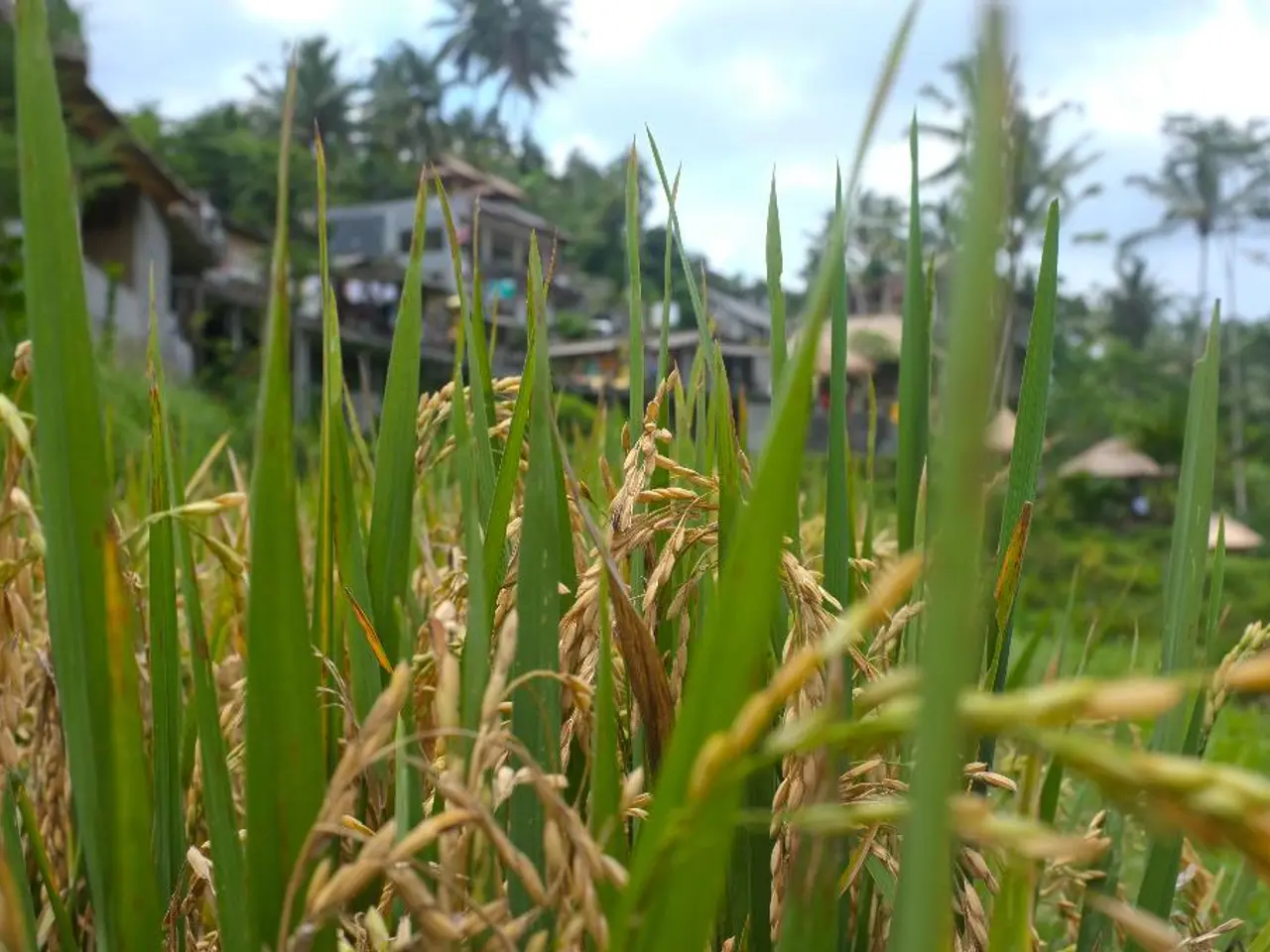Accelerated Summer Crop Planting Paced by Monsoon's Increasing Intensity
India's Summer Crop Planting Booms in 2025 Due to Favourable Monsoon Conditions
In 2025, India is witnessing an increase in summer (Kharif) crop planting, thanks to favourable above-normal monsoon rainfall. The India Meteorological Department (IMD) forecast for August-September predicts continued above-normal rainfall, supporting ongoing sowing operations and crop growth across much of the country.
The monsoon season, which began on June 1, has given farmers renewed hope for 2025. Since its commencement, India has received 6% more rainfall than usual. This beneficial monsoon condition is driving a 4.1% year-on-year increase in crop sowing area, especially for crops like rice, moong, maize, and cotton.
By July 18, Indian farmers have sown summer crops on 70.83 million hectares, a significant increase from the previous year. The success of the monsoon season could impact India's trade balance, food security, and rural incomes.
Positive Economic Outcomes Expected
The favorable monsoon conditions could lead to bumper harvests in major summer crops, improving farmer incomes due to higher yields and lower expenditure on water and fertilizers. The increased agricultural output may boost rural incomes and raise GDP contribution from agriculture, positively impacting the overall economy. The enhanced crop output can also contribute to better food security and possibly moderate food inflation.
Improved Agricultural Productivity
Favorable monsoon conditions reduce the risks associated with drought stress, allowing stable growth of key summer crops like rice, maize, cotton, and pulses. Well-distributed rains potentially reduce dependency on irrigation, preserving groundwater and lowering production costs.
However, localized spatial variability and risks of flash floods or storms still require monitoring to prevent crop damage in certain areas.
A Look Ahead
The upcoming weeks will be crucial in assessing the full impact of the monsoon season on Indian agriculture. Paddy farming has increased significantly, up 12.4% from the previous year, while cotton acreage decreased by 3.4% to 9.86 million hectares. Soybean planting has somewhat fallen from 11.9 million hectares to 11.17 million hectares. Meanwhile, pulse plantation increased by 2.3% to 8.2 million hectares, and 7.1 million hectares of maize were planted this year, up from 6.17 million the year before.
The Indian farm ministry is closely monitoring the sowing process to ensure the continued success of the 2025 monsoon season and its positive impact on India's agriculture and economy.
[1] India Meteorological Department (IMD) [2] Ministry of Agriculture and Farmers Welfare, Government of India [3] National Rainfed Area Authority (NRAA) [4] Department of Economic Affairs, Ministry of Finance, Government of India [5] National Institute of Agricultural Economics and Policy Research (NIAP)
- The India Meteorological Department (IMD) is preparing an environmental report to analyze the long-term implications of the beneficial 2025 monsoon conditions on agricultural productivity and sustainability.
- Green events promoting environmental-science and sustainable farming practices are expected to increase in 2025 as more young farmers turn towards eco-friendly and efficient farming techniques.
- Several higher education institutions are planning to offer green reporting and agricultural science courses to train the next generation of farmers and agricultural policymakers.
- The favorable monsoon conditions may contribute to a better understanding of weather patterns and climate change, which can benefit future environmental science research.
- Integrating Environmental, Social, and Governance (ESG) principles in agriculture can help mitigate the impact of monsoon variations on crop yields, ensuring the long-term economic growth and sustainability of India's agricultural sector.








